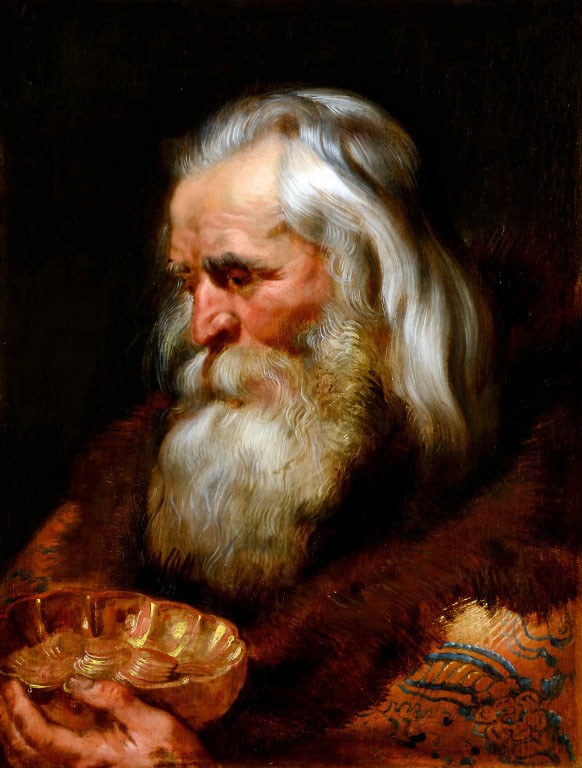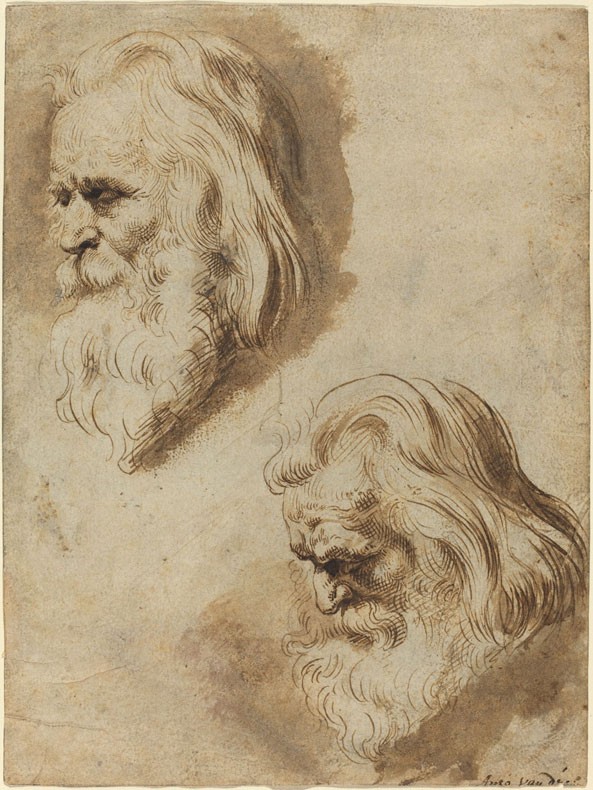In Adoration of the Magi scenes, the oldest king usually kneels closest to the Christ child and offers gold. The most precious of the three gifts, gold is traditionally interpreted as symbolizing Jesus’s kingship. Rubens’s pensive, aged figure wears no crown, but his eminence radiates in the resplendence of both his gold brocade mantle ringed by soft fur and his costly gold scalloped dish filled with coins—tribute from one king to another.
The names traditionally assigned to each of Rubens’s paintings follow the order in which they were listed in Plantin Press account records, with the assumption that the oldest king probably would have been named first and the youngest last: Gaspar, Melchior, and Balthasar. Nevertheless, this identification is far from certain, especially given the interchangeability of the names in various accounts of the Magi throughout the centuries.



